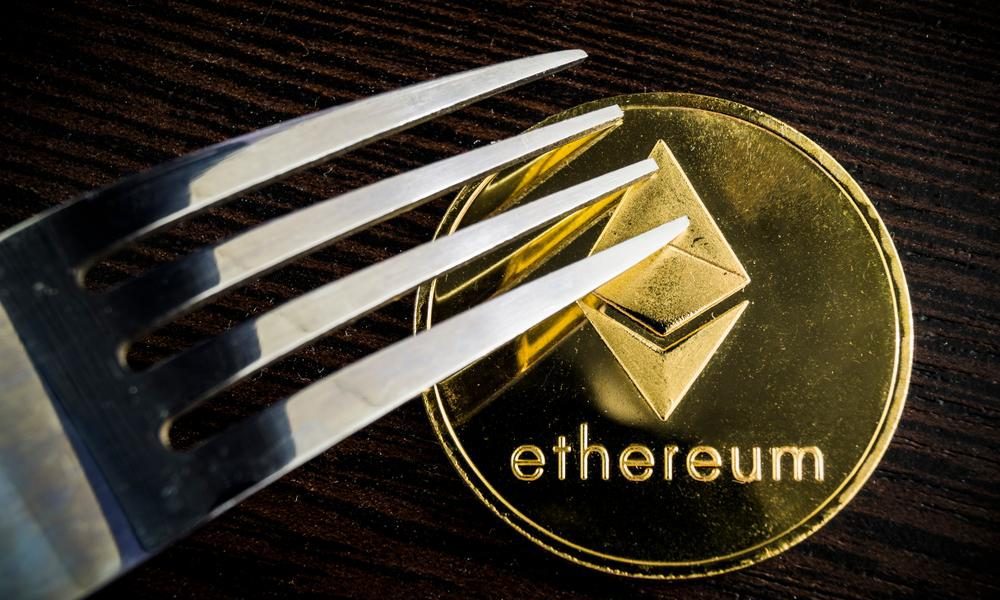- Ethereum is switching from proof of work to proof of stake and the merge is expected to take place later this year in what will be a defining moment for the entire industry.
- While it will be great for Ethereum as it will reduce energy consumption by 99 percent and slash transaction costs, it also comes with great risks for the entire industry.
This year, Ethereum will switch from proof of work consensus mechanism to proof of stake, the most significant development for the world’s largest altcoin and the underlying network for most of today’s cryptocurrency applications. And while this upgrade will change Ethereum for the better in almost every other way, the merge from one consensus mechanism to the other could prove to be a make or break moment for the entire crypto ecosystem, with plenty of things that could go wrong and possibly decimate a two trillion dollar industry.
Chase Devens, an analyst at Messari describes just how monumental the merge is, stating, “There’s never been, in the history of blockchain networks, a change on the scale of Ethereum’s transition from proof of work to proof of stake.”
Essentially, the merge will replace miners with stakers as transaction validators on Ethereum. While miners use powerful computers to validate transactions, stakers can use high-end laptops, but unlike miners, they have to stake their own Ether.
Switching to proof of stake will make Ethereum a next-generation blockchain network. For one, it will reduce energy consumption by up to 99 percent, and in an era in which climate conservation efforts are in earnest, this could be a great tailwind for the network. According to researchers, Ethereum will consume just about 2.62 megawatts, the same as a small town with about 2,000 people, in great contrast to its current state where it consumes as much energy as a midsized country.
From forks to 51% attacks – here are the risks of the merge
Miners are undoubtedly the biggest risk as Ethereum braces to switch to PoS. The merge is an event that’s set to make them redundant, and how they take this development is anyone’s guess. In the past, Ethereum miners have ganged up and threatened to orchestrate a 51 percent attack on the network just to thwart the pivot to PoS.
Read More: Vitalik to accelerate Ethereum 2.0 to prevent a 51% attack as miners wage war
These miners, at the risk of becoming redundant, could decide to fork Ethereum. They would do this by simply choosing to continue supporting the proof of work software that Ethereum currently uses. This would create two chains – one on PoS being championed by developers and another on PoW being supported by miners. The confusion that such a development could unleash would be catastrophic.
Such a scenario is more likely than it seems. For one, the merge won’t be a simple switch of consensus mechanisms and will take some time for the transition to be complete.
Danni Zheng, vice president of BIT Mining, a mining provider tells Bloomberg, “We believe POW and POS will coexist for a period of time after the switch.”
In such a situation, Ether holders, many of whom are non-technical, will be lost as to which chain their ETH is on. Exchanges and wallets could also be pulled into the chaos, with many being projected to halt ETH transactions days before the merge to avoid the confusion.
The chaos will also spread to app developers who will now have to do much more work to accommodate users of each. This could see many choose to leave Ethereum altogether to rival blockchain networks like Solana and Cardano.
Dapper Labs is one of those weighing such a move. The company, which is the maker of CryptoKitties, one of the most popular decentralized apps (dApps) on Ethereum, is considering turning to its Flow blockchain network full-time.
Dieter Shirley, chief technology officer at Dapper Labs, told Bloomberg that “a contentious fork, it’s likely it would hasten our departure from the Ethereum ecosystem.”
The fork could also come about because some miners don’t even know about the merge. Tim Beiko, a lead Ethereum developer who’s spearheading the merge observed that miners and developers aren’t that close and communications between the two are few and far between. To add to the chaos, many miners use mining pools and these pools’ interests are best served by keeping Ethereum on proof of work.
Beiko commented, “I am more concerned about the people who don’t even know this is happening, and they buy this $3,000 miner, and three months later it stops working. It would be a bad idea to start mining today.”
And then there is the security issue. Once miners know that the merge is coming, they may decide to dump Ethereum altogether and start mining on other chains such as Dogecoin and Ravencoin which use similar hardware. A sudden dip in hash rate on Ethereum could expose the network to attacks.
However, Beiko says that the development team is very prepared for this.
If we see the hash rate dropping, we could pull the Merge forward. All the software is built with an emergency option.


